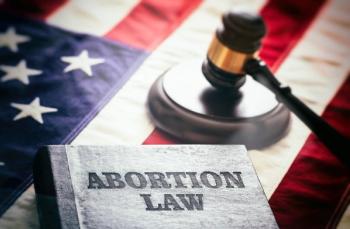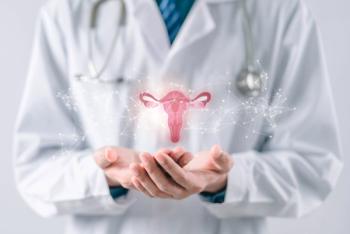
The Research Pipeline: New developments in migraine research
THE RESEARCH PIPELINE
Clinical trials in women's health
New developments in migraine research
According to the National Headache Foundation in Chicago, Americans spend more than $4 billion annually on drugs to stop migraine pain. Pharmaceutical companies had largely dismissed the headache market until sumatriptan (Imitrex) was released by Glaxo Wellcome in 1997, when it generated $840 million in worldwide sales. Since that time, there have been new scientific hypotheses about migraine pain that have fueled new research on migraine. CenterWatch has identified approximately 18 drugs in clinical testing for migraine and at least eight others close to entering early phases of clinical testing.
Although there are no known cures for migraine and scientists still don't fully understand their etiology, most experts believe that migraine symptoms are the result of neurological, chemical, or electrical changes in the brain. Several investigators, for instance, are studying a part of the brain believed to start migraines, dubbed the "migraine generator." People afflicted with migraines appear to have blood vessels that overreact to various triggers from such things as stress, and various biological or environmental conditions.
Apparently, these triggers can cause changes in levels of 5-hydroxytryptamine (serotonin), which in turn cause blood vessels in the head to expand. The area surrounding these blood vessels becomes inflamed and irritates nerve endings. And this dilation and irritation may account for the throbbing pain one experiences in the temple and behind the eyes.
Conventional preventive therapies for migraines have included antidepressants, calcium channel blockers, methysergide, and divalproex sodium. Triptans, the most recent addition to the armamentarium, specifically target the serotonin receptors. The new-generation migraine drugs are all abortivethey stop migraine pain after it has started. These medications are available in a variety of forms such as subcutaneous injections, nasal sprays, and oral tablets.
Clinical trials show that sumatriptan reduces migraine pain in over 75% of patients within 1 hour and in over 80% of patients within 2 hours. Since then, three other triptans have been approved: Zeneca's Zomig (zolmitriptan), Glaxo Wellcome's Amerge (naratriptan) and Merck's Maxalt (rizatriptan). Each drug has its own unique benefits. Similar drugs expected to be on the market soon are eletriptan, frovatriptan, and alniditan.
Side effects common with triptans include heart problems and chest tightness. Due to these problems, companies are working on improved compounds to relieve migraine symptoms while eliminating or minimizing the serious cardiovascular side effects. Zeneca is developing four variations of Zomig for different types of migraines. According to Allelix, Inc., a triptan called alx-0646 could allow physicians to prescribe a wider range of doses to treat migraine pain more effectively, and should reduce migraine recurrence rates. Also, it could be used in a wider variety of patients, including those with cardiovascular risk factors who cannot be treated effectively with current triptans.
VanGuard Medica Group/Elan Corporation's NDA submission for frovatriptan is currently being reviewed as well. Results from their Phase IIb trials showed the drug to be well tolerated in the treatment of acute migraine across a wide range of doses and the side effects were described as mild or moderate. At doses of 2.5 and 5 mg, the compound had a side effect profile similar to the placebo. Pfizer has also completed regulatory filings for Relpax and recently received approval.
Eli Lilly was developing an anti-migraine compound the company predicted would have no potential cardiovascular side effects. However, this Phase II trial was stopped due to toxicity.
Other than triptans, a number of products are being developed for prophylaxis. CoCensy's product ccd-1042 (ganaxolone) and Mylan's product dotarizine are compounds that would ease the inflammation of blood vessels.
One of the more interesting preventive treatments being studied in migraine patients is Botox, a drug marketed by Allergan. Botox is currently used to treat epilepsy because it reduces nerve activity. Results from clinical studies suggest that the agent also prevents migraines for 3 to 4 months, although one study indicates the possibility of being headache-free for up to a year. Many large studies of Botox are now being conducted across the country.
New drugs in development
Preliminary research is being done on second-generation bradykinin antagonists made by Cortech Inc., while Sibia Neurosciences is working on voltage-dependent calcium channel agonists. In preclinical trials being conducted by Cortech are CP-0364, a bradykinin-2 antagonist/bradykinin-1 antagonist, and CP-0494, a bradykinin-2 antagonist/opioid heterodimer.
Also in preclinical trials is dihydroergotamine mesylate by Anesta, an oral transmucosal formulation.
Allelix Biopharmaceuticals, on the other hand, is conducting preclinical tests on a variety of unspecified drugs that act on serotonin receptors, while Algos Pharmaceutical/Interneuron Pharmaceuticals is working on LidoDex NS, an NMDA-enhanced intranasal anesthetic for migraine.
Phase I and II trials
SB-218842 is an anti-migraine compound from SmithKline Beecham and ALX-0646, by Allelix Biopharmaceuticals, is scheduled to enter Phase I/II trials to be initiated in the fall.
BIBN 4096, a CGRP antagonist by Boehringer Ingelheim, is in Phase I/IIa trials. SB-220453, a 5-HT-1 antagonist for migraine and cluster headaches from SmithKline Beecham, is now in Phase II trials.
Phase II trials of dotarizine, a prophylactic agent from Mylan, have been completed, as have Phase II studies of CCD-1042 (ganaxolone), an allosteric modulator of the GABA receptor for migraine prophylaxis, from CoCensys.
Phase III and NDAs
In Phase III trials are almotriptan (LAS-31416), a 5NT/NE reuptake inhibitor from Pharmacia & UpJohn and Pasmigren, a serotonin agonist for acute migraine from KV Pharmaceutical.
Several new formulations of AstraZeneca's Zomig are in Phase III trials as well, including Zomig Aura, Zomig IN, a intranasal formulation, and Zomig Cluster.
And as mentioned above, a new drug application has been filed for frovatriptan, a serotonin antagonist from Vanguard Medical/Elan Pharmaceutical Research.
Source: CenterWatch, 22 Thompson Place, 36T1, Boston, MA 02210-1212; (617) 856-5900;
Paul Cerrato. The Research Pipeline: New developments in migraine research. Contemporary Ob/Gyn 2000;7:16-25.
Newsletter
Get the latest clinical updates, case studies, and expert commentary in obstetric and gynecologic care. Sign up now to stay informed.









